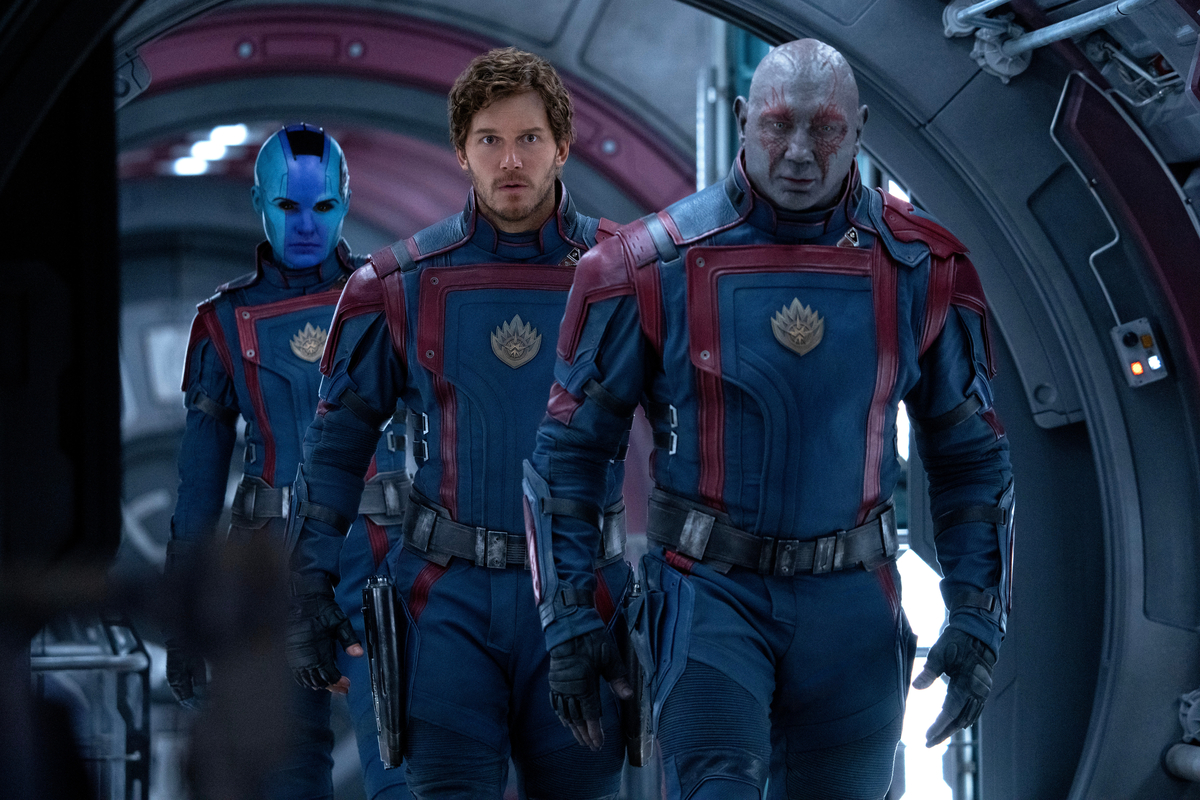‘Guardians of the Galaxy Vol. 3’: I Wasn’t Expecting Drax’s Story to be So Moving

Guardians of the Galaxy Vol. 3 will leave you emotionally wrung out. We see Rocket Raccoon’s painful, traumatic past. We almost say goodbye to several characters. Gamora and Peter’s love story ends on a bittersweet note, with Peter going home to Earth and Gamora returning to the Ravagers. Mantis goes off to find herself, while Nebula takes over Knowhere.
And then there’s Drax.
Drax has always been the comic relief of the group. In fact, Dave Bautista recently admitted that he’s always seen the role as “silly.” However, Drax has a pretty heavy backstory of his own—and the final film in the trilogy finally did something really interesting with it.
Drax the destroyer or Drax the dad?
When we first meet Drax in Guardians of the Galaxy Vol. 1, he tells Peter and the others that he used to have a family. However, his wife and child were killed by Ronan, who in turn was working for Thanos. Drax’s main character trait in the Marvel Cinematic Universe’s phases 1-3, aside from not understanding metaphors, was that he was a brash warrior seeking revenge.
That character trait completely overshadowed the fact that Drax was also a dad.
This fact finally comes up in Vol. 3, when Drax, Nebula, and Mantis find a group of imprisoned on the High Evolutionary’s ship. The kids speak a different language, which Nebula tries to overcome by yelling at them, but her strategy just makes them cry. Drax has an idea, though: he starts acting like a monkey. Er, robot? It’s clear that Drax doesn’t know exactly what a monkey is, but the kids love it. He wins them over, calms them down, and tells them how to stay safe until they’re rescued.
Nebula and Mantis, who have both spent the whole movie talking about how stupid Drax is, are forced to reevaluate him. They have to admit that he was never meant to be a destroyer—he was meant to be a dad.
What’s lovely about this scene is that we don’t just get to see another side of Drax. We get to see how great of a father he was. It turns out parenting was something he was really good at! And now, thanks to the team’s daring rescue, he’s got about a hundred lab-grown kids to raise on Knowhere.
Another interesting element of this scene is its parallel to Gorr the God Butcher in Thor: Love and Thunder. Like Drax, Gorr also addresses a group of kids by saying that he used to have a little girl just like them. However, having been infected by the Necrosword, Gorr proceeds to terrify the kids instead of calming them down. I’m not sure there’s anything profoundly meaningful in the parallel, but it does show how much the MCU is handing the reins to a younger generation of superheroes (after all, one of the lab kids ends up on the new Guardians of the Galaxy roster).
Even knowing Drax’s backstory, I honestly didn’t see this side of him coming, and I’m so glad I got to watch it unfold. I don’t know if we’ll ever see Drax onscreen again, but I’m happy to know that he’s putting his parenting skills to good use again—and hopefully beginning to heal from his grief.
(featured image: Marvel)
Have a tip we should know? [email protected]
